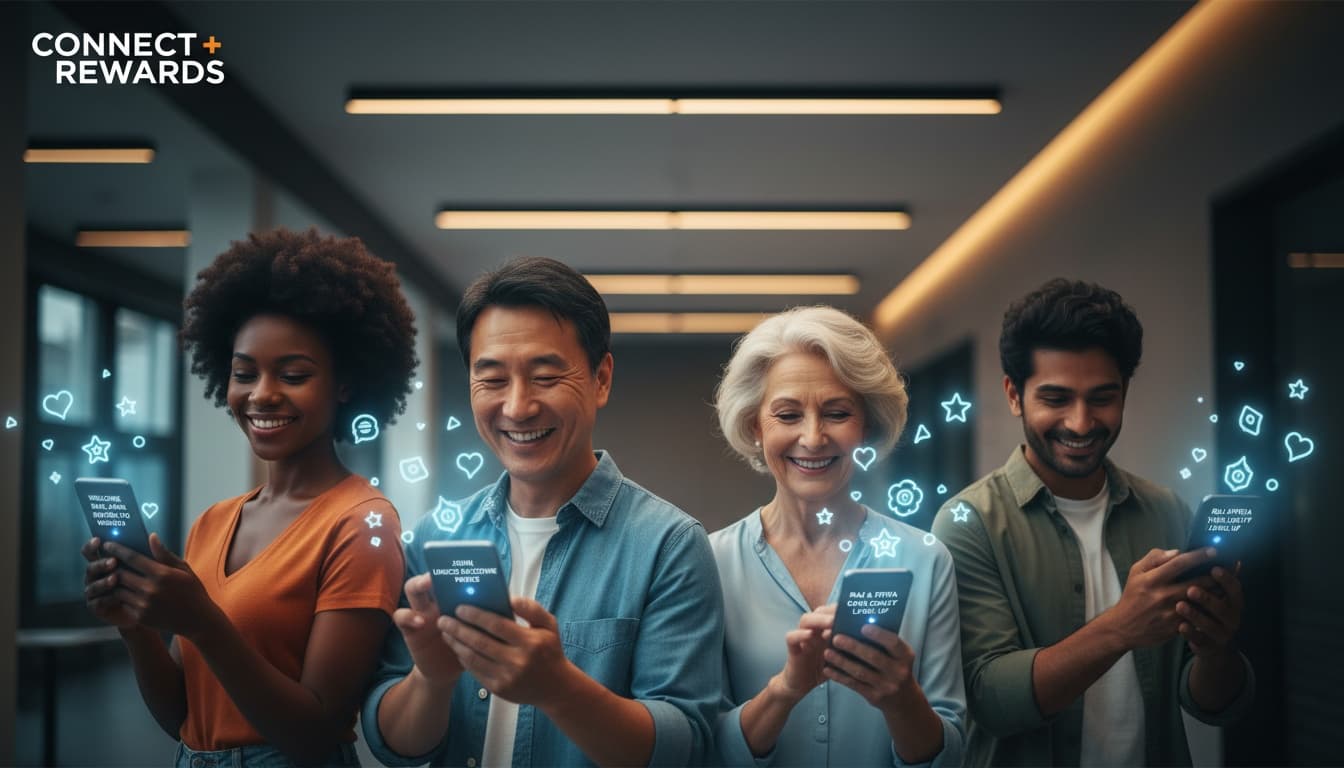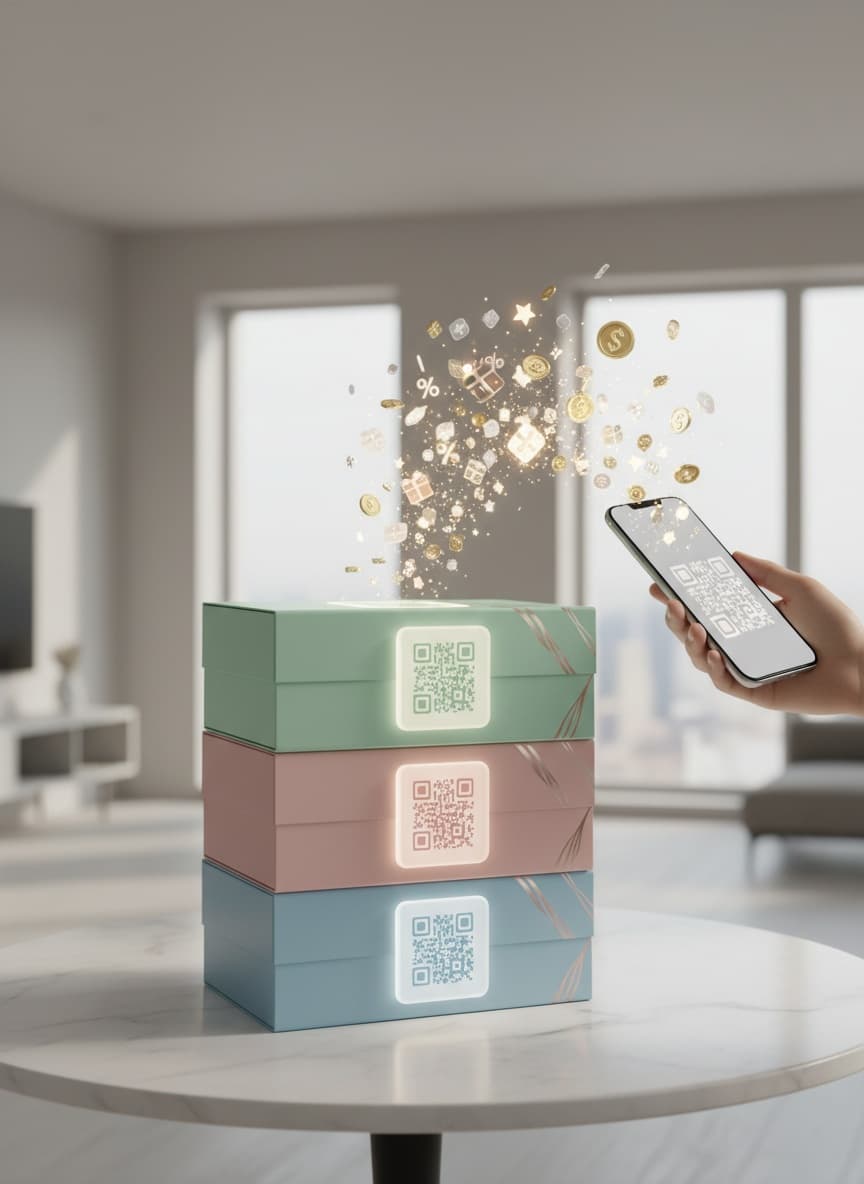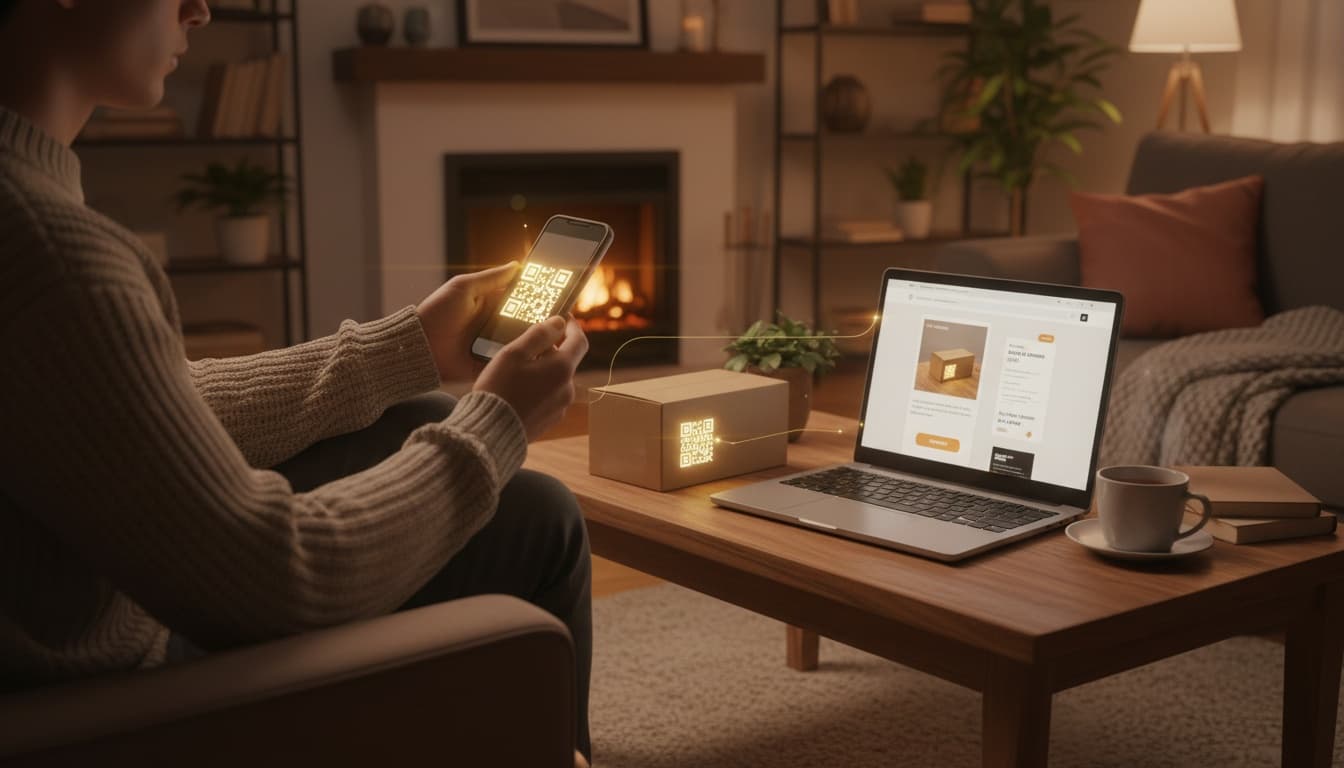E-commerce retention is no longer a side metric. Rising acquisition costs, privacy rules, and crowded ad platforms mean that sustainable growth depends on how many buyers come back, not only how many first time orders you squeeze out of campaigns. Returning customers spend more, are easier to serve, and make marketing more predictable.
At the same time, loyalty is more fragile than ever. Shoppers can compare prices in seconds, subscribe and cancel with one tap, or switch brands after a single bad experience. To truly increase customer retention in e-commerce you need a system that combines emotional loyalty, value stacking, subscription models, gamification, strong product experience loops, smart post purchase triggers, and personalized offers amplified by QR codes, rewards, and micro incentives.
Turn first time buyers into loyal e-commerce fans
Use QR journeys, micro rewards, and smart triggers to bring customers back to your store again and again.
Why customer retention wins in e-commerce
Retention is a leverage point because it improves several metrics at once. When a higher percentage of customers return, lifetime value grows, average order value often rises, and payback windows on marketing shrink. Research based on work from Bain and Harvard Business Review shows that increasing customer retention by 5 percent can lift profits between 25 and 95 percent over time.
In e-commerce many brands still focus almost all of their energy on acquisition. They spend aggressively on search and paid social while treating retention as a secondary objective managed only through generic newsletters or occasional discount blasts. The result is a fragile model that depends on constant media spend.
Brands that prioritize retention build a different engine. They think about how each order becomes the start of a relationship, not the end of a funnel. They design journeys that recognize returning customers, reward positive behavior, and use data to personalize offers. Over time, this creates a compounding effect. Each cohort of buyers keeps contributing revenue long after the first sale, which makes marketing more efficient and resilient.
Emotional loyalty versus pure convenience
Functional loyalty happens when customers stay because your store is convenient or cheap. Emotional loyalty happens when they stay because they feel connected to your brand and trust you. Both matter, but emotional loyalty is the real driver of long term retention in e-commerce.
Signals of emotional loyalty include customers who buy from you even when a marketplace offers slightly better prices, shoppers who recommend your products to friends, and people who participate in your community spaces or loyalty program without only chasing discounts. These behaviors are built through consistent experiences, identity alignment, and recognition.
To cultivate emotional loyalty, map what customers feel at each step of the journey. The product page should reduce anxiety and increase confidence. The checkout should feel smooth and transparent. The post purchase flow should reinforce that the customer made a smart choice. Small touches, such as personalized thank you messages or rewards unlocked by scanning a QR code on the packaging, create moments of delight that pure discounts cannot reproduce.

Value stacking and fair rewards
Value stacking is the process of layering different perceived benefits so that staying loyal feels clearly better than switching. Discounts are only one piece. Priority access, faster shipping, extended guarantees, early access to drops, and exclusive content all contribute to a higher perceived value of staying with your brand.
The key is to make these layers visible. Many stores offer benefits but hide them in small print. Instead, explain clearly how loyalty works. Show customers what they unlock at each purchase milestone or tier. A simple visual ladder on the account page can make the program feel tangible and motivating.
QR codes and micro incentives are strong tools for value stacking. For example, add a QR code inside the package that lets customers claim bonus points, join a private community, or access care tips for the product. This builds a bridge between the physical experience of opening the box and the digital relationship in your e-commerce environment.
Subscription models for predictable retention
Subscription models create built in retention by turning individual purchases into ongoing relationships. They work particularly well in categories such as consumables, beauty, supplements, pet products, and home essentials where customers already buy on a recurring basis.
To succeed, subscriptions must respect flexibility and perceived fairness. Customers should feel that the subscription saves them time and money without trapping them. Clear controls for skipping, pausing, or changing frequency reduce churn. Transparent pricing and simple value propositions such as save 15 percent, never run out, always get fresh stock help acquisition and retention at the same time.
Layering gamification on top of subscriptions makes them even more sticky. For example, subscribers can earn bonus points for every on time renewal, unlock surprise gifts after a certain number of cycles, or access subscriber only QR codes printed on the packaging that trigger extra rewards or hidden offers when scanned.

Gamification, rewards, and micro incentives
Gamification turns repetitive behaviors into engaging loops. In e-commerce, that means turning actions like logging in, writing reviews, sharing content, and scanning QR codes into opportunities to earn points, badges, levels, and surprise rewards. Done correctly, this drives repeat visits and purchases without feeling childish.
Micro incentives are small, instant rewards that nudge behavior in the right direction. Examples include bonus points for scanning a QR code on the thank you card, a spin to win experience after completing a purchase, or instant discounts on the next order when customers share feedback. These micro rewards work best when they are clear, immediate, and connected to valuable outcomes such as free shipping thresholds or exclusive bundles.
Solutions like QR based campaigns make it easy to track these interactions. Each scan can attribute engagement to a specific channel, product, or creative, while also updating loyalty balances in real time. This connects the fun front end of gamification with the serious back end of data and attribution.
Product experience loops that keep customers coming back
Product experience loops are sequences where using the product naturally leads back to your e-commerce store. Instead of hoping customers remember to reorder, you embed the next step into the experience itself.
For example, a coffee brand can print a QR code on the bag that opens a simple reorder flow as soon as the bag is almost empty. A skincare brand can include a QR code on the bottle that opens a guide for routine optimization, then suggests complementary products based on skin type and purchase history. A pet food brand can add a QR code on the feeding guide that leads to a personalized plan and subscription offer.
These loops close the gap between offline usage and online retention. They also gather valuable first party data about how and when customers interact with products, which feeds into better personalization. Over time, you can combine these insights with your retail engagement solutions to create consistent journeys across online and offline touchpoints.

Post purchase triggers and lifecycle communication
Many brands stop communicating right after the shipping confirmation. To increase customer retention in e-commerce you should see the post purchase phase as the most important stage of the journey. This is where you can reduce buyer remorse, educate customers, and set up the next purchase.
Build lifecycle communication around key events such as product delivery, first use, expected refill time, and milestones like the third or fifth order. Use transactional messages to add value instead of only confirming logistics. Include care tips, usage guides, and QR codes that unlock content or rewards directly connected to the product.
Combine email, SMS, in app notifications, and QR interactions so that customers can choose their preferred channel. Personalize the timing and content based on behavior. High intent customers who browse frequently but do not check out may receive personalized offers, while loyal buyers might get invitations to exclusive drops or early access collections instead of generic coupons.
Personalized offers powered by data
Personalization is one of the most proven ways to increase revenue and retention. McKinsey reports that companies that execute personalization well can see revenue lifts in the range of 5 to 15 percent and more efficient marketing spend. The key is to use data ethically and intelligently to serve customers, not just push more messages.
Start with basic segmentation such as new versus returning customers, high value segments, and categories purchased. Then refine your logic based on lifecycle stage, engagement level, preferred channels, and response history. A new customer who just bought shoes might receive a personalized recommendation for complementary accessories, while a long term customer in a loyalty tier might receive early access to a limited collection.
QR codes are a powerful way to collect behavioral data in a privacy friendly way. When customers scan codes from packaging, offline media, or events, each scan can update their profile and trigger personalized offers without requiring long forms. Over time, this creates a loop where better data leads to better offers, which leads to higher retention and more data.
Core metrics to track e-commerce retention
To manage retention like a product, you need clear metrics and dashboards. At minimum, track repeat purchase rate, time between purchases, cohort retention curves, and customer lifetime value. Monitor how these metrics change when you introduce new loyalty features, gamification elements, or QR based journeys.
Take a cohort based view. Instead of only looking at monthly totals, group customers by the month or quarter of their first purchase. Then follow their revenue and order count over time. Cohorts that experience stronger onboarding and post purchase journeys should show higher retention and value than older cohorts.
Connect these metrics to specific triggers. For example, measure the impact of adding QR codes to packaging on repeat purchases, or the impact of subscription upgrades on churn. Use this feedback loop to refine your retention system instead of running isolated campaigns that are difficult to compare.
A practical roadmap to increase retention in e-commerce
Improving retention is a continuous process rather than a one time project. A practical roadmap starts with auditing your current journeys, setting clear targets, then rolling out improvements step by step.
First, map your current lifecycle from first visit to repeat purchases. Identify gaps where customers are left without guidance, recognition, or value. Then define one or two focus areas, such as building a simple loyalty program, adding QR codes to packaging, or launching subscription options for your top products.
Second, implement quick wins that create visible progress. Examples include a welcome series that explains how customers can earn rewards, a QR enabled thank you card that gives bonus points for scanning, or a simple leveling system that unlocks perks after three or five orders.
Third, invest in a more integrated solution that connects QR journeys, rewards, and analytics into a single environment. Platforms like VISU can help you orchestrate campaigns across online and offline touchpoints, attribute scans and visits, and optimize based on real engagement data. This lets you move from isolated experiments to a true retention engine that compounds over time.
Build a retention engine for your e-commerce brand
Combine QR journeys, gamified rewards, and personalized offers to turn one time buyers into loyal customers who come back again and again.

